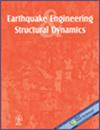Wall-to-Floor Connections in a Two-Storey Low-Damage Concrete Wall Test Building
Abstract
Prior studies have demonstrated that walls implementing unbonded post-tensioned (PT) tendons can provide an effective solution to achieve a low-damage design objective. The wall-to-floor connection is crucial for the floor to achieve the low-damage performance requirements, and wall-to-floor interaction can also alter the lateral load transfer and overstrength actions that develop in the system. To validate low-damage concepts and connection detailing, a two-storey PT concrete wall building with both flexible and isolated wall-to-floor connection designs was recently subjected to shake-table tests. The design of the flexible connections aimed to transfer lateral loads while accommodating wall uplift with a link slab or composite floor. The isolated connections were designed to decouple the floor from the uplift and rotation of the wall to minimise the damage to the floor while transferring forces in the horizontal direction. The behaviour of these wall-to-floor connections was investigated in this paper with consideration of several performance criteria. Key objectives of this investigation of the two wall-to-floor connections included: (1) summarise the observed performance and damage states; (2) quantify the deformation responses; and (3) investigate the force transfer and acceleration responses. Test results confirmed that both the flexible and isolated connections effectively addressed deformation compatibility in the system. The flexible connection primarily accommodated wall uplift by developing narrow cracks that were distributed within the floor. The isolated connection allowed lateral load transfer without imposing deformations on the floor. The acceleration responses of the two connections exhibited different trends. The integral design of the flexible connection ensured that forces were fully transferred from the wall to the floor with consistent acceleration responses, while the isolated connection partially released the transfer mechanism, with only horizontal and vertical accelerations with low-frequency components transmitted through the connection.


 求助内容:
求助内容: 应助结果提醒方式:
应助结果提醒方式:


